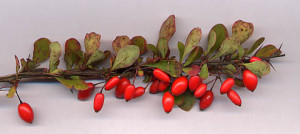The flood gates for the rivers of migrant birds are opened now, and every cold front brings down new visitors. Usually we think of spring as prime time for birdwatching, but in fall there are more birds as parents migrate as well as their offspring. On the right day, a few of them sing, just a little. It’s a slight performance compared to their spring and summer vocalizations, but it reminds one of how many species travel through this area. Up in Ashland, they are finding huge numbers of many species of migrants, and it’s possible to see 19 species of warblers in a morning, and the first juncos from Canada. At Hawk Ridge in Duluth they are counting and banding raptors as they migrate along the ridges lining Lake Superior, and numbers are increasing steadily. Soon they will begin their owl banding for the fall.
 At Woodland Dunes our summer counts are completed and being compiled, and now fall monitoring is starting. To gain a better sample of birds using our preserve, we monitor both by doing bird counts and also catching and banding. Because not all birds sing this time of year, and many that are brightly adorned in spring now have drab and confusing plumage, catching a few allows us to positively identify more species that are present, and banding gives us the opportunity to track their movements and lifespan. Because we host school groups for education programs in fall, some of the children are able to watch as the songbirds are released to continue their amazing journeys.
At Woodland Dunes our summer counts are completed and being compiled, and now fall monitoring is starting. To gain a better sample of birds using our preserve, we monitor both by doing bird counts and also catching and banding. Because not all birds sing this time of year, and many that are brightly adorned in spring now have drab and confusing plumage, catching a few allows us to positively identify more species that are present, and banding gives us the opportunity to track their movements and lifespan. Because we host school groups for education programs in fall, some of the children are able to watch as the songbirds are released to continue their amazing journeys.
As the songbirds travel through, they strip native (and non-native) plants of their fruit. Native plants provide better nutrition, and our red mulberry, dogwoods, and wild grapes are now being stripped of their life-sustaining fruits as fall progresses.
Insects too are migrating- huge numbers of green darner dragonflies in the last week along with American kestrels which prey on them during migration), and the last generation of monarch butterflies of the summer. A number of monarchs were tagged by Ann Shebesta during a program here, and we hope some of those are found safely at the wintering habitat in Mexico. Last year, monarchs had a tough time during the winter, one of the worst ever, and their numbers are greatly reduced. We hope they recover, and are paying extra attention to large patches of milkweed growing on our property, now thinking in terms of those areas being butterfly sanctuaries. Some of the patches have thousands of both common and whorled milkweed, and a few red or swamp milkweeds grow in marshes and wet swales- it’s important not to let exotic invasive plants overtake those areas.
Our Barberryans, staff and volunteer invasive plant managers, are gearing up for a busy fall now that birds are done nesting (we avoid disturbing them when they are). Battle lines have been drawn both within and outside our preserve- phragmites grass is targeted on the Twin rivers and the Manitowoc, huge patches of common buckthorn in Zander Park and some in our preserve across Columbus St., and Japanese knotweed at Shoto and in Manitowoc as well. And Japanese barberry of course, which is an increasing threat to the woodlands of our preserve. But not all is death- thousands of replacement native trees and shrubs are being planted, and once we fend off the deer will welcome those migratory songbirds with their fruit.
Early fall is a good time to plant, and cooler temperatures and increased moisture will aid the establishment of native trees and shrubs. But please avoid the Japanese barberry- it’s very nasty to remove once it escapes into the forest.
